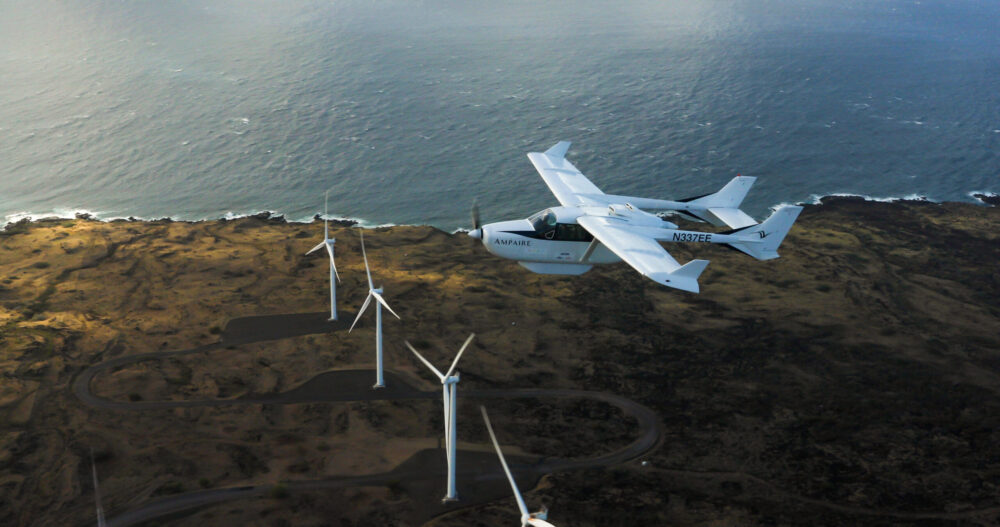Imagine flying to your latest vacation destination on a plane that produces virtually zero noise or particulate emissions. That is what flying in an electric plane, one of science’s newest advancements, could look like in the next decade as the technology becomes more mainstream.
Electric planes may seem like transportation of the future, but companies like Archer, Joby Aviation and Ampaire are rapidly developing the necessary technology to make them a reality now. The world’s first fully electric airplane took flight in Vancouver, Canada in 2019. The flight lasted 15 minutes. In October 2018, Ampaire launched a flight from Los Angeles to San Francisco using their Electric EEL aircraft—the company claims the two-and-a-half-hour flight is the longest trip ever flown by a commercial-sized aircraft powered by electric propulsion.
“I have flown the electric airplanes in Finland, Norway and Australia,” said Susan Ying, senior vice president of global partnerships at Ampaire during Forth‘s recent webinar on electric planes. “It’s an amazing experience flying in something that is quiet and not polluting the atmosphere. It’s a great experience.”
Electric aircraft may have a role to play on a more local scale, too. In areas where traffic congestion is a problem, the opportunity for air taxis is growing in popularity. In early 2021, Veriport Chicago—the city’s only vertical helicopter landing facility—announced an alliance with BLADE Urban Air Mobility to support flights between Chicago, lake communities and various college campuses throughout Illinois and Indiana.
“You can take off from rooftops or open areas of cities and land elsewhere due to the congestion in cities. They could utilize existing operating heliports or new approved ports,” Ying said. The current infrastructure in many cities makes short distance flights attractive, as little would have to be changed to allow for the takeoffs and landings of aircraft.
Electric airplanes are a top 10 emerging technology, particularly because of their economic and motor efficiencies. Electric motors can be up to 95% efficient, while regular plane engine efficiencies fall anywhere from 18-23%. “[This technology] has the capability of reducing costs up to 90%,” Ying said. “Regional air mobility consists of short takeoffs and landings. We could utilize more than 10 times the amount of currently operating commercial airports.”
The expansion of the electric plane industry depends heavily on improving infrastructure to allow for charging and service to target areas.
“We need to be preparing the energy supply and how it will be dispensed—that needs to happen in parallel,” said Paul Stith, director of global transportation initiatives at Black and Veatch. “We are building some of the largest networks that are on the ground.”
Wright Electric, a U.S.-based company producing technology for large electric airplanes, has partnered with easyJet and Chicago-based nonprofit Clean Energy Trust to push the limits of electric aviation. The company’s trademark aircraft, named Wright 1, can fly 800 miles and seats almost 200 passengers. The company has announced that it expects the Wright 1 to be in service by 2030.
“This is another crucial step for our partner Wright Electric to move towards the introduction of commercial electric aircraft, and it is exciting to see their ambitious timeline for testing and entry into service,” said Johan Lundgren, CEO of easyJet, in Wright’s January 2020 news release.
While electric planes still have some obstacles to overcome—such as a limited range of a few hundred miles—the environmental benefits and independence from fuel prices and supply make electric aviation technology increasingly relevant.
“There is a huge opportunity here,” Stith said, “If you open the skies in a more electric fashion, the sky is the limit.”
By Jenna Spray
Chicago Area Clean Cities
To view Forth’s webinar “It’s A Bird! It’s A Plane! It’s an Electric Plane!,” please visit their website at this link.



